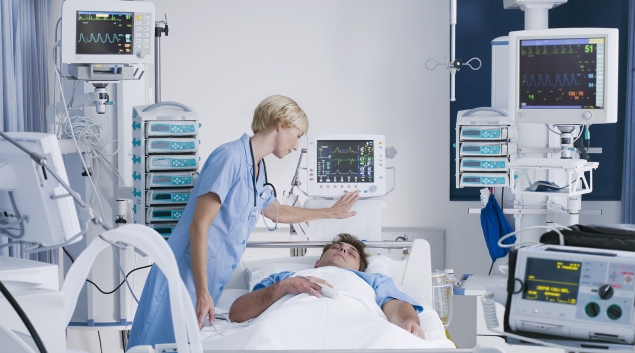
Advancements in connectivity between medical devices are expected in the coming years, as industry experts are planning to roll out new standards they say will reshape technological interoperability.
As medical technology has continued to advance, interoperability capabilities between devices such as ventilators and fusion pumps have lagged, according to Tobias Klotz, system architect for Drägerwerk AG and Co. KGaA.
Klotz, who spoke in a presentation for HIMSS20 Digital, said new standards will lay the groundwork for vendors to make products easily connectable through the use of vendor-independent medical apps. As it is, he said, patients are connected to multiple devices by multiple vendors that have little if any connectivity.
“Looking around, there is no real standard for device-to-device communication,” said Klotz, who has worked on developing the architecture for the standards.
The standards are being crafted through work from a number of institutions and organizations including Johns Hopkins University and the nonprofit Integrating the Healthcare Enterprise, according to Todd Cooper, executive director at Trusted Solutions Foundry, who spoke with Klotz.
They are expected to undergo testing at this year’s IHE (Integrating the Healthcare Enterprise) Connectathon and be further developed in the next year, according to Cooper.
The standards are based on the combination of IHE PCD profiles with the IEEE 11073 Service-oriented Device Connectivity (SDC) standards family. Standardized abilities include plug-and-play connectivity, reporting, alerting and external control.
Klotz and Cooper said better interoperability between devices could result in what they described as the “silent ICU” in which alarms are not constantly going off from different devices at once by a patient’s bedside. Ideally, they said, medical devices used on one patient could be connected so that caregivers can track them collectively through a single interface, as well as remotely.
That still has not happened because devices are produced by many different vendors not obligated to design their products with any uniformity that would allow for such interoperability, Klotz said. The result is multiple device alarms going off right by the patient’s bedside, which they said not only disturbs the patient, but is less practical than having alarms go off where the actual caregiver is.
Klotz said 80-95% of alarms are considered clinically irrelevant, and that consequently 50% of the alarms going off are ignored. He said the noise also threatens the focus of the caregiver as they work on the patient.
“In the end it creates a giant mess,” Klotz said.
The goal is for the standards to result in a certification process involving a third-party organization to make it easy to identify what devices will be compatible. Standards should help lead to a market in which devices are easily connected to an interface where caregivers can monitor each device in use on a given patient.
A primary concern for connecting devices is security for the data being stored and shared. Klotz said the standards would rely on transport layer security, the safety of which he said has been demonstrated by its use in other industries like banking.
“Honestly,” said Klotz, “if it’s safe enough for your online banking, it’s also safe enough for communication between medical devices.”
The standards would have to be finalized and approved by the U.S. Department of Health and Human Services’ Office of the National Coordinator for Health Information Technology and the Centers for Medicare and Medicaid Services.
In March, HHS finalized two long-awaited sets of rules to govern how providers, payers and technology vendors must design their systems to give patients safe and secure access to their digital health data.
The rules were issued by the Office of the National Coordinator for Health Information Technology and CMS to fulfill the interoperability and information-blocking provisions of the landmark 21st Century Cures Act.
HHS called the new rules – which hold public and private entities accountable for enabling easy electronic access to health information – the most extensive healthcare data-sharing policies yet implemented by the federal government.
Max Sullivan is a freelance writer and reporter who, in addition to writing about healthcare, has covered business stories, municipal government, education and crime. Twitter: @maxsullivanlive maxesullivan@gmail.com
